|
Your search criteria found 648 images Mission |
| My List |
Addition Date | Target | Mission | Instrument |
Size
|

|
1997-09-10 | Earth |
Galileo |
420x480x3 | |

|
|||||

|
1997-09-10 | Earth |
Galileo |
620x480x3 | |

|
|||||

|
1997-09-10 | Earth |
Galileo |
Solid-State Imaging |
1020x1128x3 |

|
|||||

|
1997-09-10 | Earth |
Galileo |
Solid-State Imaging |
452x439x3 |

|
|||||

|
1997-09-23 | Jupiter |
Galileo |
Photopolarimeter Subsystem |
807x700x3 |

|
|||||

|
1997-09-23 | Jupiter |
Galileo |
Solid-State Imaging |
712x715x3 |

|
|||||

|
1997-09-23 | Jupiter |
Galileo |
Solid-State Imaging |
614x900x1 |

|
|||||

|
1997-09-24 | Jupiter |
Galileo |
Photopolarimeter Subsystem |
585x376x3 |
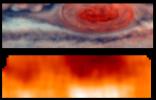
|
|||||

|
1997-09-29 | Jupiter |
Galileo |
Photopolarimeter Subsystem |
875x605x3 |
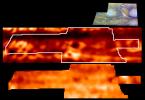
|
|||||

|
1997-11-04 | Io |
Galileo |
Solid-State Imaging |
200x200x1 |

|
|
||||

|
1997-11-04 | Jupiter |
Galileo |
Solid-State Imaging |
313x256x1 |
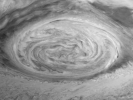
|
|
||||

|
1997-11-17 | Callisto |
Galileo |
Solid-State Imaging |
1425x1625x1 |

|
|||||

|
1997-11-17 | Callisto |
Galileo |
Near Infrared Mapping Spectrometer |
900x850x3 |

|
|||||

|
1997-11-17 | Callisto |
Galileo |
Near Infrared Mapping Spectrometer |
1800x1700x3 |

|
|||||

|
1997-11-17 | Io |
Galileo |
Solid-State Imaging |
1401x1938x3 |

|
|||||

|
1997-11-18 | Io |
Galileo |
Solid-State Imaging |
798x787x3 |

|
|||||

|
1997-11-18 | Io |
Galileo |
Solid-State Imaging |
1215x729x3 |

|
|||||

|
1997-11-18 | Ganymede |
Galileo |
Solid-State Imaging |
400x400x1 |

|
|||||

|
1997-11-18 | Ganymede |
Galileo |
Solid-State Imaging |
560x905x1 |

|
|||||

|
1997-11-18 | Ganymede |
Galileo |
Solid-State Imaging |
1920x1080x3 |

|
|||||

|
1997-11-18 | Europa |
Galileo |
Solid-State Imaging |
2000x1000x3 |

|
|||||

|
1997-11-18 | Ganymede |
Galileo |
Solid-State Imaging |
1920x1080x3 |

|
|||||

|
1997-11-18 | Io |
Galileo |
Solid-State Imaging |
2284x727x3 |

|
|||||

|
1997-11-18 | Jupiter |
Galileo |
Solid-State Imaging |
1053x1491x3 |

|
|||||

|
1997-11-18 | Callisto |
Galileo |
Solid-State Imaging |
1870x635x3 |

|
|||||

|
1997-11-18 | Callisto |
Galileo |
Solid-State Imaging |
1200x1200x1 |

|
|||||

|
1997-11-18 | Ganymede |
Galileo |
Solid-State Imaging |
321x260x1 |

|
|||||

|
1997-11-18 | Ganymede |
Galileo |
Solid-State Imaging |
519x520x1 |

|
|||||

|
1997-11-18 | Ganymede |
Galileo |
Solid-State Imaging |
411x431x1 |

|
|||||

|
1997-11-18 | Ganymede |
Galileo |
Solid-State Imaging |
245x203x1 |

|
|||||

|
1997-11-18 | Ganymede |
Galileo |
Solid-State Imaging |
430x370x1 |

|
|||||

|
1997-11-18 | Ganymede |
Galileo |
Solid-State Imaging |
382x341x1 |

|
|||||

|
1997-11-18 | Ganymede |
Galileo |
Solid-State Imaging |
357x283x1 |

|
|||||

|
1997-11-18 | Io |
Galileo |
Solid-State Imaging |
1600x800x3 |

|
|||||

|
1997-11-18 | Io |
Galileo |
Solid-State Imaging |
810x1530x3 |

|
|||||

|
1997-11-18 | Io |
Galileo |
Solid-State Imaging |
193x143x3 |

|
|||||

|
1997-11-18 | Io |
Galileo |
Solid-State Imaging |
378x288x3 |

|
|||||

|
1997-11-18 | Io |
Galileo |
Solid-State Imaging |
208x163x3 |

|
|||||

|
1997-11-18 | Io |
Galileo |
Solid-State Imaging |
153x133x3 |
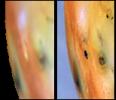
|
|||||

|
1997-11-18 | Io |
Galileo |
Solid-State Imaging |
660x600x1 |

|
|||||

|
1997-11-18 | Io |
Galileo |
Solid-State Imaging |
168x83x3 |

|
|||||

|
1997-11-18 | Io |
Galileo |
Solid-State Imaging |
228x113x3 |

|
|||||

|
1997-11-18 | Amalthea |
Galileo |
Solid-State Imaging |
320x320x1 |

|
|||||

|
1997-11-20 | Ganymede |
Galileo |
Solid-State Imaging |
648x471x1 |

|
|||||

|
1997-11-21 | Ganymede |
Galileo |
Solid-State Imaging |
648x531x1 |
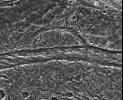
|
|||||

|
1997-11-24 | Ganymede |
Galileo |
Solid-State Imaging |
648x460x1 |

|
|||||

|
1997-11-25 | Ganymede |
Galileo |
Solid-State Imaging |
400x278x1 |
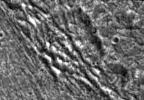
|
|||||

|
1997-11-26 | Ganymede |
Galileo |
Solid-State Imaging |
620x540x1 |

|
|||||

|
1997-12-01 | Ganymede |
Galileo |
Solid-State Imaging |
720x379x1 |

|
|||||

|
1997-12-04 | Jupiter |
Galileo |
Solid-State Imaging |
571x1000x3 |

|
|||||

|
1997-12-10 | Io |
Galileo |
Solid-State Imaging |
1000x1000x3 |

|
|||||

|
1997-12-10 | Callisto |
Galileo |
Solid-State Imaging |
1760x2200x1 |

|
|||||

|
1997-12-10 | Jupiter |
Galileo |
Solid-State Imaging |
1700x900x3 |

|
|||||

|
1997-12-10 | Jupiter |
Galileo |
Solid-State Imaging |
1650x950x3 |

|
|||||

|
1997-12-10 | Europa |
Galileo |
Solid-State Imaging |
807x920x3 |

|
|||||

|
1997-12-16 | Europa |
Galileo |
Solid-State Imaging |
1710x1845x1 |

|
|||||

|
1997-12-16 | Europa |
Galileo |
Solid-State Imaging |
1623x1940x1 |

|
|||||

|
1997-12-16 | Ganymede |
Galileo |
2667x2000x3 | |

|
|||||

|
1997-12-18 | Callisto |
Galileo |
Solid-State Imaging |
400x400x1 |

|
|||||

|
1997-12-18 | Callisto |
Galileo |
Solid-State Imaging |
400x400x1 |

|
|||||

|
1997-12-18 | Callisto |
Galileo |
Solid-State Imaging |
1757x1905x1 |

|
|||||

|
1997-12-18 | Jupiter |
Galileo |
Solid-State Imaging |
820x1440x3 |

|
|||||

|
1997-12-18 | Io |
Galileo |
Solid-State Imaging |
800x800x1 |

|
|||||

|
1997-12-18 | Io |
Galileo |
Solid-State Imaging |
493x493x1 |

|
|||||

|
1997-12-18 | Europa |
Galileo |
Solid-State Imaging |
800x800x1 |
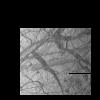
|
|||||

|
1997-12-18 | Callisto |
Galileo |
Solid-State Imaging |
800x780x1 |

|
|||||

|
1997-12-18 | Io |
Galileo |
Solid-State Imaging |
743x647x1 |
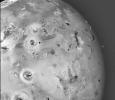
|
|||||

|
1997-12-18 | Io |
Galileo |
Solid-State Imaging |
800x472x1 |

|
|||||

|
1997-12-18 | Io |
Galileo |
Solid-State Imaging |
800x615x1 |

|
|||||

|
1997-12-18 | Io |
Galileo |
Solid-State Imaging |
797x752x1 |

|
|||||

|
1997-12-18 | Io |
Galileo |
Solid-State Imaging |
685x752x1 |

|
|||||

|
1997-12-18 | Jupiter |
Galileo |
Solid-State Imaging |
758x1028x1 |

|
|||||

|
1997-12-18 | Callisto |
Galileo |
Solid-State Imaging |
1088x585x1 |

|
|||||

|
1997-12-18 | Callisto |
Galileo |
Solid-State Imaging |
2130x1065x1 |

|
|||||

|
1997-12-18 | Jupiter |
Galileo |
Solid-State Imaging |
625x685x3 |

|
|||||

|
1997-12-18 | Callisto |
Galileo |
Solid-State Imaging |
1099x1451x3 |

|
|||||

|
1997-12-18 | Callisto |
Galileo |
Solid-State Imaging |
317x800x3 |
|
|
|||||

|
1997-12-18 | Jupiter |
Galileo |
Solid-State Imaging |
1000x1700x1 |

|
|||||

|
1997-12-18 | Jupiter |
Galileo |
Solid-State Imaging |
1000x1700x1 |

|
|||||

|
1997-12-18 | Jupiter |
Galileo |
Solid-State Imaging |
1000x1700x1 |

|
|||||

|
1997-12-18 | Jupiter |
Galileo |
Solid-State Imaging |
1000x1000x1 |

|
|||||

|
1997-12-18 | Jupiter |
Galileo |
Solid-State Imaging |
800x800x3 |

|
|||||

|
1997-12-18 | Jupiter |
Galileo |
Solid-State Imaging |
800x800x3 |

|
|||||

|
1997-12-18 | Io |
Galileo |
Solid-State Imaging |
3711x2569x1 |

|
|||||

|
1997-12-18 | Io |
Galileo |
Solid-State Imaging |
1817x1817x3 |
![Io, the most volcanic body in the solar system is seen in the highest resolution obtained to date [Sept.7 & Nov. 6, 1996] by NASA's Galileo spacecraft.](/thumb/PIA00583.jpg)
|
|||||

|
1997-12-18 | Io |
Galileo |
Solid-State Imaging |
390x197x3 |

|
|||||

|
1997-12-18 | Io |
Galileo |
Solid-State Imaging |
388x394x3 |

|
|||||

|
1997-12-18 | Io |
Galileo |
Solid-State Imaging |
388x394x3 |

|
|||||

|
1997-12-18 | Jupiter |
Galileo |
Solid-State Imaging |
683x467x3 |

|
|||||

|
1997-12-18 | Io |
Galileo |
Solid-State Imaging |
390x197x3 |

|
|||||

|
1997-12-18 | Io |
Galileo |
Solid-State Imaging |
390x197x3 |
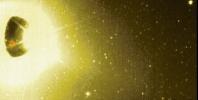
|
|||||

|
1997-12-18 | Europa |
Galileo |
Solid-State Imaging |
365x563x1 |

|
|||||

|
1997-12-18 | Jupiter |
Galileo |
Solid-State Imaging |
518x368x3 |

|
|||||

|
1997-12-18 | Callisto |
Galileo |
Solid-State Imaging |
1850x900x3 |

|
|||||

|
1997-12-18 | Europa |
Galileo |
Solid-State Imaging |
639x714x1 |

|
|||||

|
1997-12-18 | Io |
Galileo |
Solid-State Imaging |
792x755x3 |
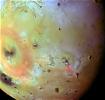
|
|||||

|
1997-12-18 | Callisto |
Galileo |
Solid-State Imaging |
2666x2000x3 |

|
|||||

|
1997-12-18 | Europa |
Galileo |
Solid-State Imaging |
2666x2000x3 |

|
|||||

|
1997-12-18 | Io |
Galileo |
Solid-State Imaging |
2666x2000x3 |

|
|||||

|
1998-01-21 | Europa |
Galileo |
Photopolarimeter-Radiometer |
987x1459x3 |

|
|||||

|
 |
 |
 |
 |
 |
 |
 |

|
| 1-100 | 101-200 | 201-300 | 301-400 | 401-500 | 501-600 | 601-700 |
| Currently displaying images: 101 - 200 of 648 |